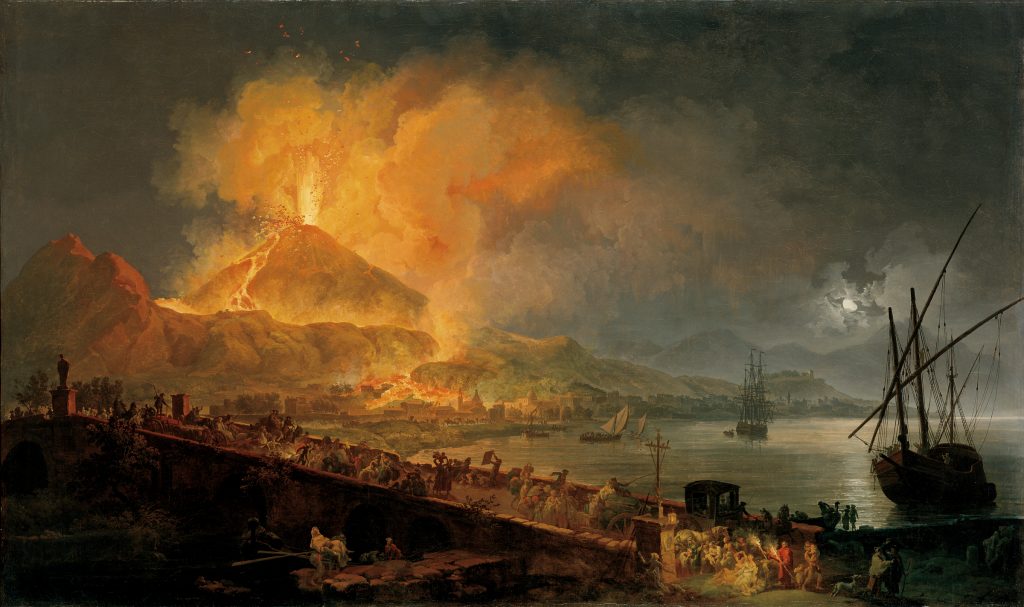The Eruption of Mt. Vesuvius (work of art)
Artwork Info
Key Ideas
- This oil painting depicts an eruption of Mount Vesuvius, an active volcano in Italy. The artist witnessed this scene in 1769.
- Pierre-Jacques Volaire was a French painter who made a living as a souvenir artist in Italy. He is best known for his paintings of Mount Vesuvius. He painted more than 30 different views of the volcano.
- Volaire sold many of his Mount Vesuvius paintings to wealthy young British men on their Grand Tour through France and Italy. Mount Vesuvius and the ruins of the ancient city of Pompeii were popular stops on the tour.
Learn More
The Eruption of Mt. Vesuvius depicts an action-packed nighttime scene. A volcano erupts in the background as lava flows into the town below. People are shown running across a bridge to escape the natural disaster. The brightly colored lava contrasts with the blue glimmer of the moon and the water. The contrast creates a sense of drama in this neoclassical-style painting. Neoclassicism became popular in the 18th and 19th centuries. It was a cultural movement in which art and architecture was inspired by that of ancient Greece and Rome.
In 79 CE the ancient Roman city of Pompeii was destroyed by an eruption of lava from Mount Vesuvius. The ruins of Pompeii were discovered in 1748. Interest in ancient civilizations and the scientific developments of that time period led to the preservation and study of ancient ruins. The eruption of Mount Vesuvius was a recurring theme in many 18th-century European paintings.
French painter Pierre-Jacques Volaire had a successful career in Italy painting landscapes of Mount Vesuvius. He painted more than 30 different views of it. Mount Vesuvius erupted six times during the 18th century. It was one of the most popular natural attractions in Europe during that time. Northern European (mostly British) travelers purchased Volaire’s paintings as souvenirs during their Grand Tour. This multiyear, educational journey was considered to be a rite of passage for wealthy young men in the 18th century. During the tour the men studied ruins, cities, landscapes, and art throughout Europe.
tags: volcano, landscape, earth science, geology, landforms
Additional Resources
Resources for Teachers
- Read an article about the Grand Tour.
- Read an essay about neoclassicism.
- Read an article about the history of Pompeii’s excavation efforts.
Resources for Students
- View another work by Volaire that depicts Mount Vesuvius.
- Read an article about neoclassicism.
- View another work of art in the NCMA collection that features neoclassical subject matter.

